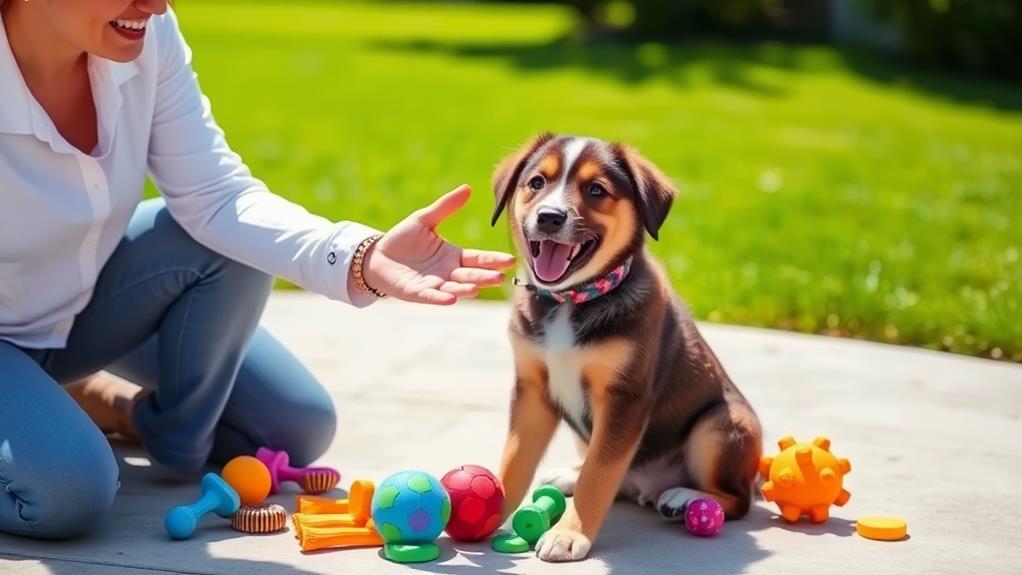To master basic commands with your puppy, start with simple commands like "sit," "stay," and "come." Choose a quiet space for training. Keep sessions short, around 5-10 minutes, to hold their attention. Use positive reinforcement—treats or praise—immediately after they follow a command. Be consistent with your commands and body language to avoid confusion. Ultimately, practice in different environments to help your puppy generalize their training. These tips set a solid foundation for communication. Stick around to discover more techniques that can further enhance your puppy's training journey!
Start With the Basics
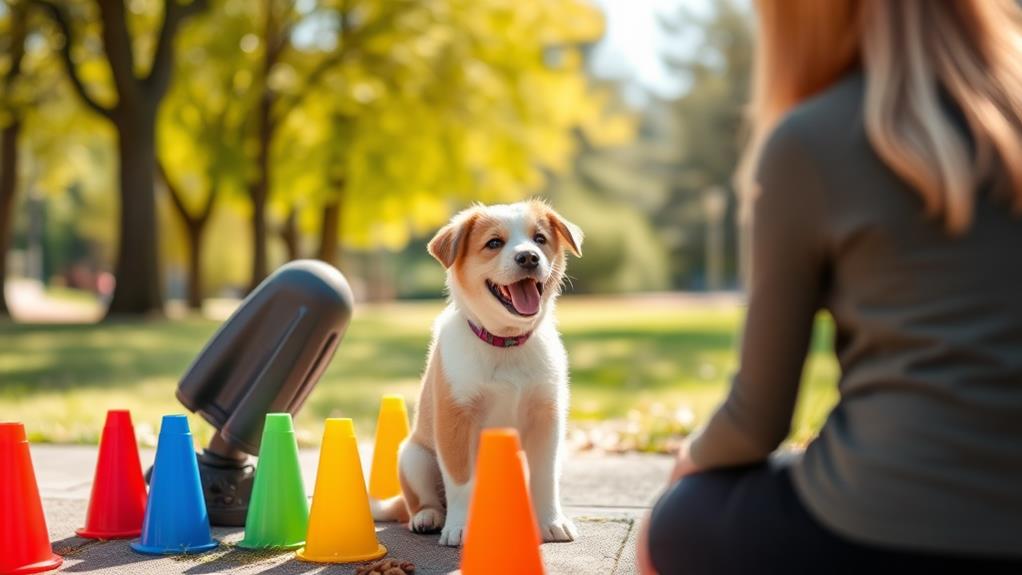
When you begin training your puppy, starting with the basics is essential for building a strong foundation. Focus on teaching simple commands like "sit," "stay," and "come." These fundamental skills not only help with obedience but also establish clear communication between you and your puppy.
First, choose a quiet environment with minimal distractions. This allows your puppy to focus on you and the task at hand. Use short training sessions, around five to ten minutes, to keep your puppy engaged and prevent frustration. Puppies have short attention spans, so frequent, brief sessions work best.
Next, be consistent with your commands. Use the same word for each command every time you train. This consistency helps your puppy understand what you expect. Incorporate hand signals alongside verbal commands; visual cues can reinforce learning.
Use Positive Reinforcement
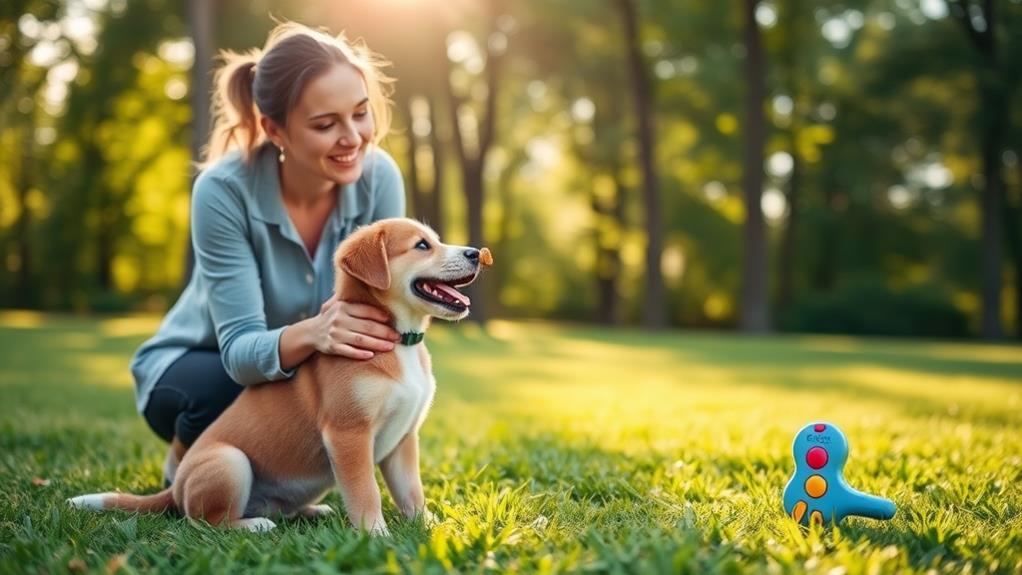
Positive reinforcement is a powerful tool in puppy training that encourages desired behaviors through rewards. When you reward your puppy for good behavior, you help them associate that behavior with something pleasant, making it more likely they'll repeat it. This can include treats, praise, or playtime—whatever your pup enjoys most.
Start by identifying the behaviors you want to reinforce, such as sitting, staying, or coming when called. When your puppy performs the desired action, immediately offer a reward. This immediate feedback helps them understand exactly what they did right.
Consistency is key; make sure you reward the behavior every time it occurs during training sessions. If you want your puppy to learn quickly, try to avoid negative reinforcement. Instead, redirect unwanted behaviors by encouraging positive actions. For example, if your puppy jumps on guests, guide them to sit and reward them for that instead.
Be Consistent and Clear
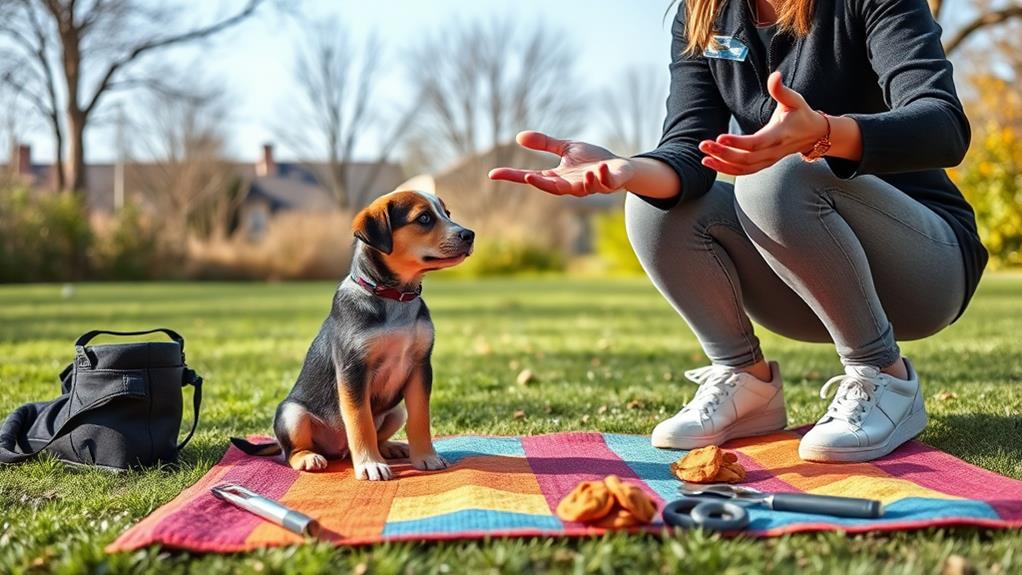
Rewarding your puppy for good behavior is only part of the training equation; being consistent and clear in your commands is equally important. Puppies thrive on routine and clarity, so guarantee that you use the same words and tone for each command. If you say "sit" one day and "sit down" the next, your puppy might get confused about what you want. Stick to simple, one-word commands and use them consistently.
Additionally, always reward your puppy immediately after they follow your command. This immediate reinforcement helps them connect the behavior with the reward. If you wait too long, they mightn't understand which action earned them the treat.
Always use the same body language and gestures to accompany your commands. Your puppy will pick up on visual cues just as much as verbal ones. If you're inconsistent with your gestures, it can lead to confusion.
Lastly, practice commands in different environments to reinforce consistency. Training in various locations helps your puppy learn that "sit" means the same thing, whether you're at home, in the park, or at a friend's house. This way, you'll build a solid foundation of understanding.
Keep Training Sessions Short
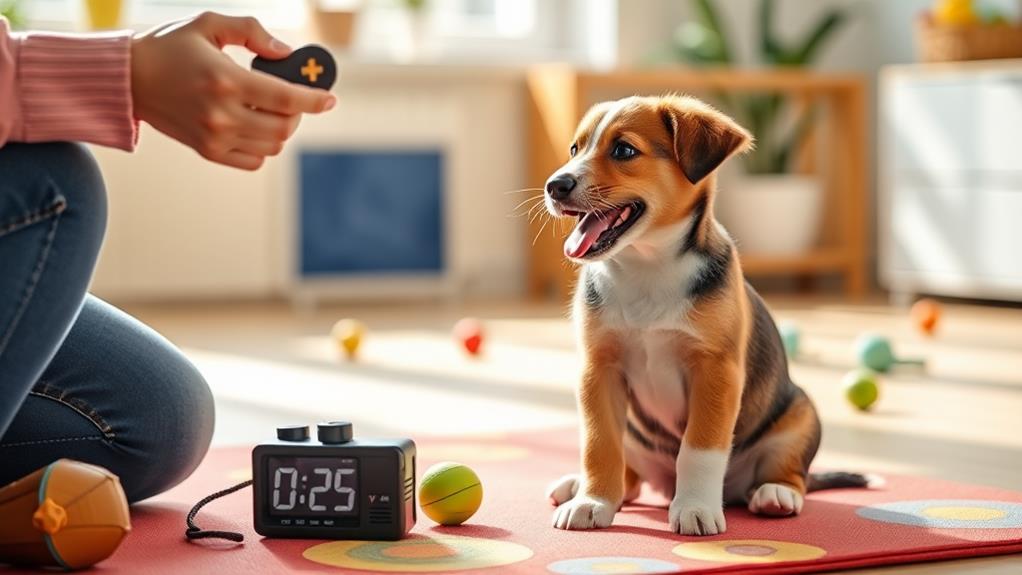
Keeping training sessions short is essential for your puppy's learning and engagement. Puppies have shorter attention spans, so cramming too much information into one session can lead to frustration for both of you. Aim for sessions that last about 5 to 10 minutes. This way, your puppy stays focused and retains what you teach.
Choose one command at a time: Focus on a single command to avoid overwhelming your puppy.
End on a positive note: Always finish with a success, whether it's a command your puppy already knows or a new one they've just grasped.
Use breaks wisely: Incorporate short breaks during the session to keep your puppy relaxed and engaged.
Practice in Different Environments
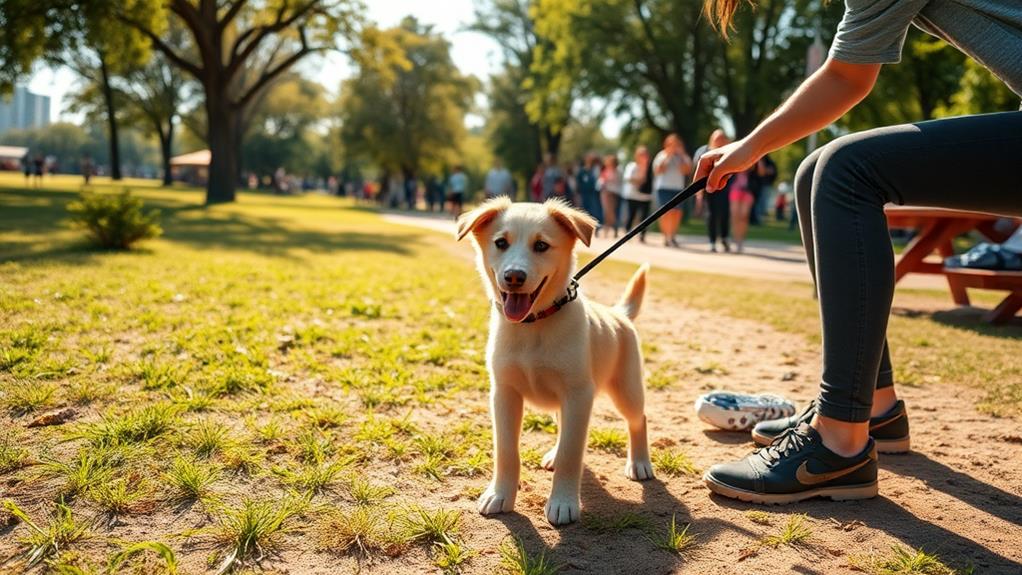
Training your puppy in various environments is critical for reinforcing their skills and ensuring they respond well, regardless of distractions. Start in a quiet space, like your living room, where your puppy can focus on you without too many interruptions. Once they grasp the commands, gradually introduce them to busier areas, like your backyard or a park. This helps them learn to generalize their training.
When you practice outdoors, be aware of potential distractions—other dogs, people, or sounds. Use treats and praise to keep your puppy engaged. If they get distracted, calmly redirect their attention back to you. Don't forget to mix it up; practice in a variety of places like a friend's house, a pet store, or even on a walk. Each new environment presents unique challenges that can sharpen your puppy's focus and obedience.
Consistency is key, so keep practicing these commands in different settings. The more situations your puppy encounters, the better they'll become at obeying your commands, no matter where they are. This approach not only builds their confidence but also strengthens your bond as a team.
Frequently Asked Questions
How Often Should I Train My Puppy Daily?
You should train your puppy daily for about 5 to 10 minutes, focusing on consistency and repetition. Short, engaging sessions help reinforce learning while keeping your puppy enthusiastic and keen to participate.
What Age Is Best to Start Training?
You can start training your puppy as early as eight weeks old. At this age, they're keen to learn and absorb new information quickly. Early training helps establish good habits and strengthens your bond.
Can Older Dogs Learn Basic Commands?
Think of older dogs as wise students returning to school. They can learn basic commands just like pups, benefiting from their life experience. With patience and love, you're sure to see progress in no time!
What Tools Do I Need for Training?
For training, you'll need treats, a clicker for positive reinforcement, a leash, and a comfortable collar. Having patience and consistency is imperative, too. These tools help create a positive learning environment for your dog.
How Do I Address Stubborn Behavior During Training?
When stubbornness rears its head, remember, patience is a virtue. Stay consistent, use positive reinforcement, and break tasks into smaller steps. Celebrate small victories, and don't forget to keep training sessions fun and engaging!
Conclusion
By starting with the basics, using positive reinforcement, staying consistent and clear, keeping training sessions short, and practicing in different environments, you're setting your puppy up for success. You're building trust, fostering communication, and nurturing a lifelong bond. Remember, each command learned is a step towards a well-behaved companion. Embrace the journey, celebrate the progress, and enjoy the joy your puppy brings. With patience and love, you'll both thrive together in this exciting adventure!

